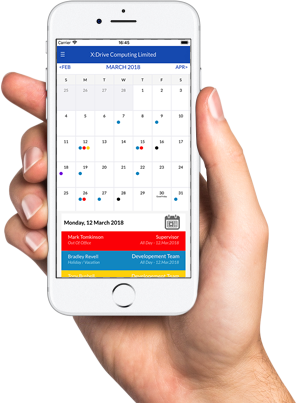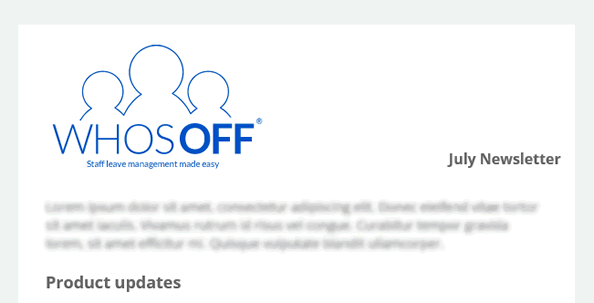
New Zealand’s president, Jacinda Ardern, has received global praise for her handling of the coronavirus outbreak, and now she’s turning her attention to domestic health issues. In a recent speech, Ardern announced that she’s doubling fully paid statutory sick leave for Kiwi employees – so every person will receive ten days instead of five.
The move brings New Zealand in line with Australian sick leave entitlement, while other countries offer even more generous policies. In Croatia, workers receive 42 paid sick days, while Germans receive their full salary for up to six weeks.
This differs from the UK, where employers are only obliged to pay statutory sick pay of £95.85 per week after four days of absence, for up to 28 weeks. But should you be considering a more generous policy? There’s an argument that giving employees greater financial support in times of ill health actually improves the wellbeing and productivity of your workforce.
Sick leave stats don’t tell the full story
The good news for employers is that the UK is a nation of committed workers, with the average person only requesting 6 sick days in 2019 and 7 in 2020, according to WhosOff data. However, this figure doesn’t tell the full story.
UK workers average sick days
2019 - 6 days
2020 - 7 days
#committed
Limitations surrounding statutory sick pay, plus the fact that SSP doesn’t kick-in until after three continuous days’ absence, mean many professionals use annual leave to cover periods of illness. The knock-on effect is that they have less time off in good health, and they may also push themselves to work when they’re under the weather, if their annual leave allowance is running low.
While persevering with a bad cold or upset stomach might seem like a personal choice, this culture of ‘presenteeism’ has a huge impact for employers. If someone comes into work with a contagious illness, it can quickly spread to other colleagues, causing serious staffing shortages. And even if it only affects the person concerned, they may take longer to recover if they don’t feel able to recuperate at home, leading to long-term stress and productivity problems.
Stopping the slow burn of presenteeism
Sometimes short-term pain causes long-term gain, and this definitely rings true for workplace absences. Making sure employees know it’s OK to take time off sick, and that their workload will be fully covered, may lead to the number of days off that staff take rising slightly. However, it will stop the slow burn of sub-optimal health that affects so many professionals –and ultimately compromises workplace productivity.
The challenge companies face when changing their wellbeing culture is ensuring that people feel able to take time off. For example, if someone calls in sick, this needs to be communicated to the team as quickly as possible, and arrangements made to cover their commitments until they are well again. But most firms find this challenging, because of the way staff movements are currently recorded.

Responding effectively to staff calling in sick
Many organisations still rely on manual systems to manage staff absence. Their holiday calendar is a spreadsheet, and updates such as who’s out at a meeting or off sick are simply shared by email. This makes it impossible to track exactly who’s in and who’s off on any given day.
The simplest way to coordinate employee movements effectively is through an online planner. A good piece of software – like WhosOff – will enable your business to record and share every type of absence in one place, for complete transparency. Planned events like holidays, time off in lieu and external meetings are centralised, and everyone in the company can log on and view the calendar. This makes factoring-in unexpected time off much easier.
If an employee calls in sick, managers or HR representatives can update teams immediately via leave planning software, so everyone can see who won’t be in. They can also check to see if that person had meetings booked, to rearrange or cover their workload with minimal disruption. And they can look at which of their colleagues are still in the office, to reallocate essential tasks.
Understanding real-time staff availability is also important for longer term sick leave. Finances aside, knowing their work is covered during periods of ill health will reduce employees' stress levels, helping them to recover quicker.
And on a practical level, recording absences can empower senior staff to analyse trends around sick leave. For example, WhosOff has found that the number of staff phoning in sick is 17% higher on a Monday than a Friday, while January is the peak month of the year for illness.

Check out more WhosOff sick leave statistics
Send the right signals to your employees
There’s sometimes a misconception among employers that a generous sick leave policy will be open to misuse, with people taking more time off than they need. But this is often the opposite of the truth. Committed employees will come into the office when they really should be resting at home, spreading germs to their workmates and compromising their own recovery.

By enhancing paid sick leave policies, your firm is sending a clear message that you care about people’s wellbeing, and understand people sometimes need to take unplanned time off. More importantly, if you combine this updated policy with an investment in leave management software, your company can improve the way staff absences are coordinated, to ensure that a sudden sick day doesn’t throw the cat in among the operational pigeons.
WhosOff empowers companies to manage staff leave online – from holidays and time off in lieu, to sickness and compassionate leave.
Photos by Andrea Piacquadio and CDC of Pexels.com

